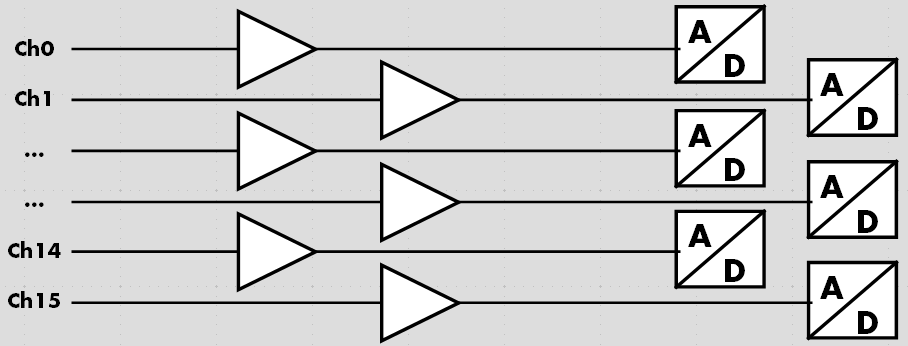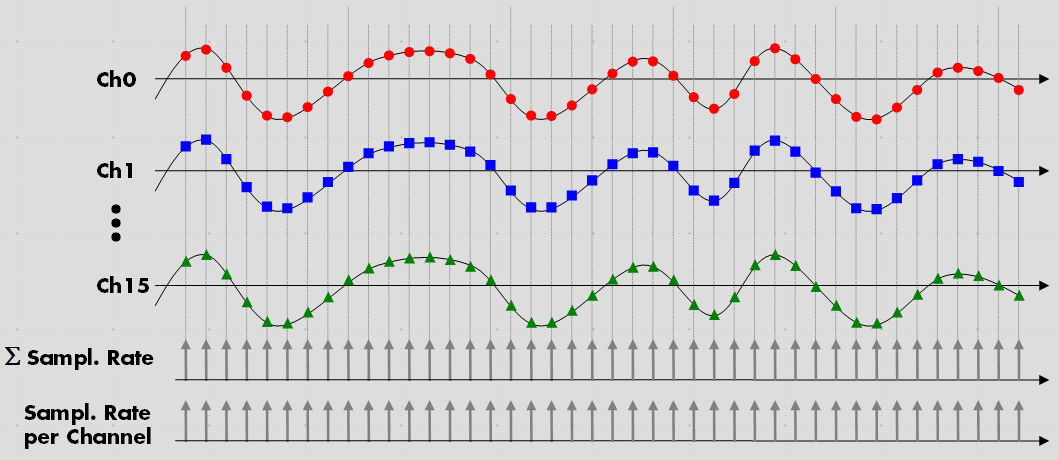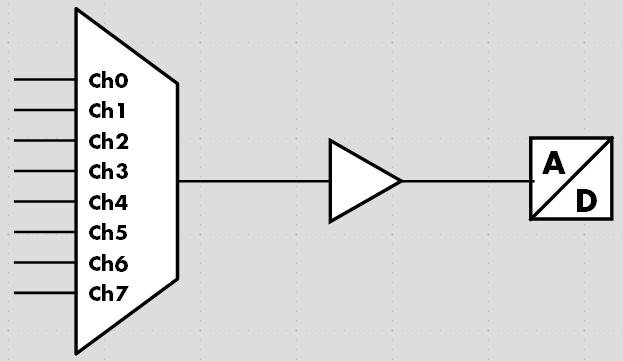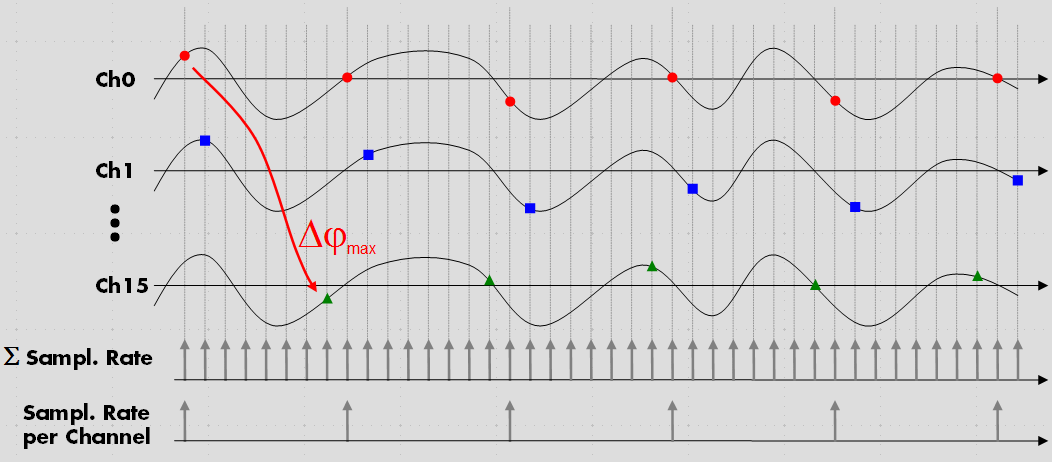-
Comparisons
-
Hardware Features
-
Systems
-
Software
-
Company
Knowledge-Base
- Comparisons
- Digitizers
Simultaneous Sampling vs. Multiplexed Sampling
Synchronous design
 All acquisition and generation cards from Spectrum are built with a completely synchronous design. Every channel has its own independent input/output amplifier as well as an independent A/D converter. This synchronous design is made for cards of 2 to 16 channels, even 16 channel 16 bit acquisition cards such as M2i.47xx series. All input channel related settings can be individually programmed for each channel. Compared with standard cards with multiplex technology, where scanning of each channel one after the other with a single A/D converter occurs, the more sophisticated design of the Spectrum cards has a lot of advantages:
All acquisition and generation cards from Spectrum are built with a completely synchronous design. Every channel has its own independent input/output amplifier as well as an independent A/D converter. This synchronous design is made for cards of 2 to 16 channels, even 16 channel 16 bit acquisition cards such as M2i.47xx series. All input channel related settings can be individually programmed for each channel. Compared with standard cards with multiplex technology, where scanning of each channel one after the other with a single A/D converter occurs, the more sophisticated design of the Spectrum cards has a lot of advantages:

- Full sampling rate for all channels
- No phase delay between the single channels
- Smallest crosstalk between adjacent channels due to individual input amplifiers
- Direct comparison of acquired values with no need for interpolation
The above graph shows a data acquisition with simultaneous sampling ADCs for each channel. This is for comparison with the below shown graph for multiplexed data acqusition.
Multiplexed Sampling
 Multiplexed acquisiton cards have an input amplifer for all channels and one A/D converter and often only one amplifier section for all channels. Due to the restrictions of the multiplexer it is used for slow sampling rates like 10 kS/s to 1 MS/s.
Multiplexed acquisiton cards have an input amplifer for all channels and one A/D converter and often only one amplifier section for all channels. Due to the restrictions of the multiplexer it is used for slow sampling rates like 10 kS/s to 1 MS/s.
The design and production of such cards is much cheaper than simultaneous acquisition cards as there are far less expensive components on the card. In general these cards have a lot of disadvantages when it comes to a comparison with simultaneous sampling cards like the Spectrum digitizers.

The image on the right shows the result of such a multiplexed data acquisition. A lot of disadvantages are directly seen from the graph but there are some more:
- There is a phase delay between the acquisition channels as shown in red
- The maximum sampling rate depends on the number of active channels
- The maximum sampling rate that is shown in the data sheet is only the sum sampling rate. Each ADC is only sampled at a speed of [Sampling rate] / [number of active channels]
- The crosstalk between channels is increased as all signals are routed through the same active component
- Often multiplex digitizers can only run with full sampling rate as long as only one channel is active. The maximum sum sampling rate for multiplexing channels is even further limited. As example a competitor's product can run with 1 channel 2 MS/s or a sum sampling rate of 1 MS/s for 2 or more channels making a sampling rate per channel of 500 kS/s for 2 channels mode.